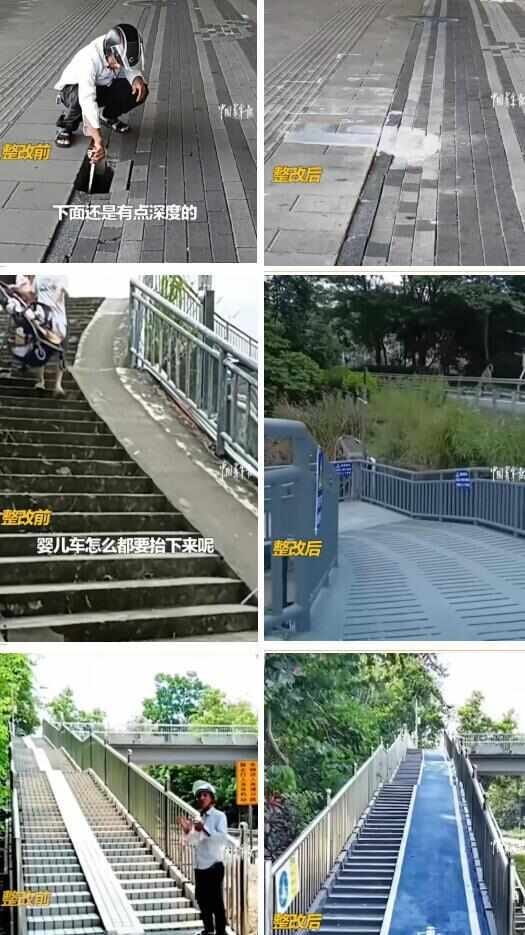The Man With a Tape Measure: What Shenzhen’s “Ruler Guy” Reveals About China’s Governance
A viral citizen in Shenzhen is reshaping how local governments listen, act, and prove they serve the people.
1. Who Is “Ruler Guy”
In Shenzhen, one ordinary man went viral. People call him “Ruler Guy.”
Every day, he walks the streets with a tape measure, checking slopes, manholes, and barriers. No slogans. No drama. Just short videos that show what is wrong and where.
Almost every time he posts, the government reacts within hours. Roads get fixed. Barriers adjusted. Trees trimmed. Netizens call it “Shenzhen Speed.”
At first glance, it looks like a feel-good story from the internet. In reality, it is a real-time case study of how China’s urban governance works today.
2. Why This Matters
“Ruler Guy” shows two things.
First, citizens are starting to take initiative in public affairs.
Second, the government is responding faster and more directly to social feedback.
This story spread across Chinese social media, and then state media joined in. People’s Daily, CCTV, and Xinhua News Agency all published commentaries. When that happens in China, it means the case is being highlighted as a national example, not just local news.
Shenzhen is not an ordinary city. Forty years ago, it was a fishing town near Hong Kong. Today it is a top-tier metropolis, China’s technology hub, and one of the world’s most advanced urban economies. Companies like Huawei, Tencent, and DJI are based there.
So when state media amplified “Ruler Guy,” they were sending a message to other cities: learn from Shenzhen. Respond fast. Fix problems. Serve the people.
In China, local officials are promoted based on performance evaluations. These include public service, complaint response rates, and citizen satisfaction. “Ruler Guy” became a kind of living test for local governance. When problems are solved quickly, it shows competence. When they are ignored, it exposes failure.
This reflects China’s performance-driven bureaucracy. A local official’s career depends on how well they solve real problems for ordinary people. Citizens’ feedback becomes political pressure and motivation
.
3. The System Behind the Speed
Shenzhen has built a system called “Shenzhen-MinYiSuBan,” which means “Public Opinion Express Service.” It handles over 10,000 citizen reports a day. Artificial intelligence helps identify keywords, assign cases, and track progress.
Average response time is within minutes. Some issues are resolved the same day.
This is what Chinese scholars call “agile governance.” It replaces slow bureaucratic processes with digital coordination. A citizen posts an issue. The government acts. Media and the public track the results. Together, they form a feedback loop of visibility and accountability.
The key change is that governments are moving from waiting for complaints to actively searching for problems.
4. Why Western Readers Should Care
Western critics often describe China’s government as rigid and centralized. Yet this case shows another side. It is a massive administrative system that uses technology, competition, and incentives to make ordinary voices visible.
In the United States or Canada, reporting a broken manhole often means calling a hotline, filling out forms, and waiting weeks. No one is rewarded for efficiency, and no one is penalized for delay.
In Shenzhen, one video and a tape measure can trigger full coordination across departments.
It is not a perfect system, but it signals modernization. Legitimacy is increasingly measured by response speed and execution, not by talk.
5. Culture Meets System
China’s administrative culture is built around one principle: serve the people.
This is not a slogan. It is a performance metric.
A cleaner city, fewer complaints, and higher satisfaction ratings all contribute to an official’s evaluation record.
That is why “Ruler Guy” is more than a citizen with a camera. He is a mirror reflecting local governance in action. His tape measure does not only test sidewalks. It tests how accurately and efficiently public power responds to citizens.
This system is not about arguing. It is about delivering results.
“Ruler Guy” did not change the system. The system adjusted around him.
Modern governance is not about slogans. It is about speed and accountability.
Shenzhen proves that.

